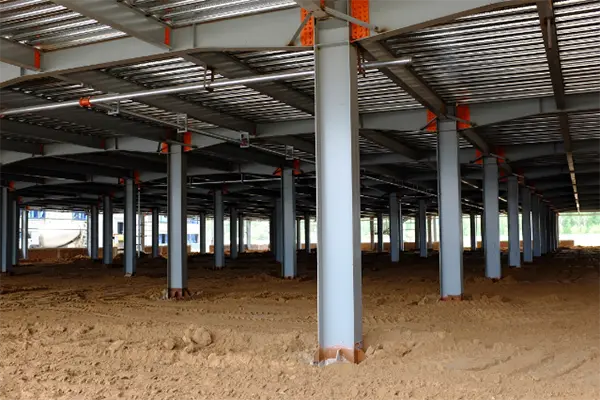When it comes to structural support in construction, steel columns and concrete columns are two of the most commonly used materials. Each has its own set of advantages and disadvantages that make it suitable for different applications. In this blog post, we’ll explore the key differences between steel and concrete columns to help you understand which might be the best choice for your construction project.
Material Properties
Steel Columns
- Strength-to-Weight Ratio: Steel columns are known for their high strength-to-weight ratio, meaning they can support significant loads with minimal material.
- Durability: Steel is highly durable and resistant to compression, making it ideal for supporting heavy loads.
- Corrosion Resistance: While steel is strong, it can be susceptible to rust and corrosion if not properly protected, especially in coastal or humid environments.

Concrete Columns
- Compressive Strength: Concrete columns have excellent compressive strength, but they are not as strong in tension.
- Weight: Concrete is heavier than steel, which can result in a more substantial foundation requirement.
- Fire Resistance: Concrete has natural fire-resistant properties, making it a safer choice in the event of a fire.

Cost and Economy
Steel Columns
- Initial Cost: Steel columns can be more expensive initially due to the cost of the material and the need for corrosion protection.
- Speed of Construction: Steel structures can be erected quickly, which can reduce overall construction time and labor costs.
Concrete Columns
- Initial Cost: Concrete is often less expensive than steel on a per-unit basis.
- Longevity: Although the initial cost may be lower, concrete’s longevity and lower maintenance requirements can result in cost savings over the life of the structure.
Construction and Design
Steel Columns
- Flexibility: Steel columns can be easily adapted to various designs and can be more readily modified after installation.
- Sustainability: Steel can be recycled, and the manufacturing process has become more energy-efficient over time.
Concrete Columns
- Formwork: Concrete columns require formwork, which can be time-consuming and labor-intensive to set up and remove.
- Design Limitations: Concrete is less flexible than steel, which can limit design options and require more extensive planning during construction.
Aesthetics and Finish
Steel Columns
- Exterior Finish: Steel columns can be left exposed and require less finishing work compared to concrete.
- Architectural Expression: The sleek and modern look of steel columns can be a design feature in some architectural styles.
Concrete Columns
- Finishing: Concrete columns often require additional finishing or cladding to achieve a desired aesthetic.
- Texture and Color: Concrete can be colored or textured to create a variety of visual effects, offering more design flexibility in terms of appearance.
Environmental Considerations
Steel Columns
- Energy Efficiency: Steel is a highly recyclable material, which can contribute to the sustainability of a project.
Concrete Columns
- Thermal Mass: Concrete has good thermal mass, which can help regulate indoor temperatures and reduce energy consumption for heating and cooling.
Conclusion
The choice between steel and concrete columns will depend on various factors, including the project’s specific requirements, budget, design preferences, and environmental considerations. Steel columns offer high strength and versatility, while concrete columns provide excellent compressive strength and fire resistance. Understanding the differences between these two materials can help architects and engineers make informed decisions to ensure the structural integrity and longevity of their constructions.
Post time: Apr-26-2024



